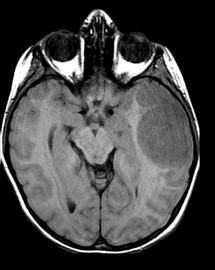Primitive neuroectodermal tumors (PNET)
Primitive neuroectodermal tumors (or CNS PNET) are considered aggressive neoplasms of the brain, most frequently encountered in the paediatric population, however, the term PNET no longer appears in the current WHO classification of CNS tumors.
The term has fallen out of favour and has been removed from the 2016 update to the WHO classification of CNS tumors, now incorporated into the term embryonal tumours with multilayered rosettes (ETMR).
Traditionally a number of tumors variably fell under the umbrella term CNS PNET:
- medulloblastoma: the most common type
- supratentorial PNET: 15% of all CNS PNET
- pineoblastoma: most common supratentorial PNET
- ependymoblastoma: also removed from the WHO in 2016 and incorporated into ETMR
- medulloepithelioma
- spinal PNET: rare
The tumor discussed below is what was formerly known as supratentorial primitive neuroectodermal tumour (sPNET).
Epidemiology
PNET typically occurs in the paediatric population, usually during the first 10 years of life, with a mean age of 5 years. There is a recognised male predilection.
MRI features
The extent of peritumoral vasogenic oedema is surprisingly low given the size of the mass and the aggressive tumour characteristics.
T1: Imaging is highly variable and can be hypointense to isointense
T2: T2 weighted images typically show high signal solid components, but cystic components are common
T1 C+ (Gd): Contrast series show heterogeneous enhancement. Leptomeningeal seeding is also common.


